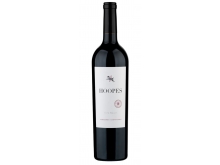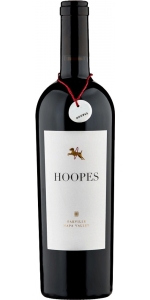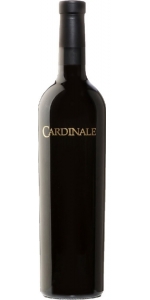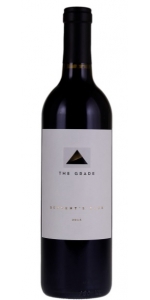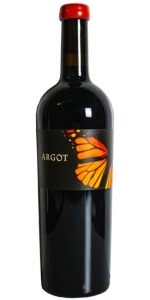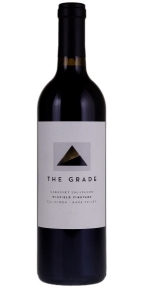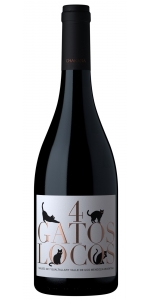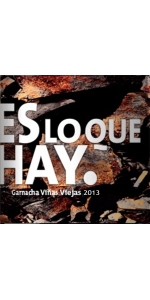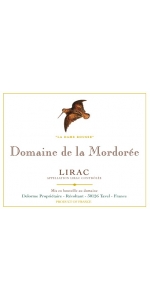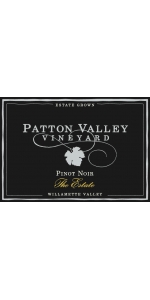Hoopes Cabernet Sauvignon Napa Valley 2019
| Country: | United States |
| Regions: | California California (Napa) |
| Winery: | Hoopes Vineyard |
| Grape Type: | Cabernet Sauvignon |
| Organic: | Yes |
| Vintage: | 2019 |
| Bottle Size: | 750 ml |
Hoopes Cabernet Sauvignon Oakville is made from 100 percent Cabernet Sauvignon.
“Our flagship wine is, and always has been, the soul of our farm. Crafted from our ten-acre vineyard in the heart of Oakville, planted in 1983, it was previously a fruit source for a number of famous estates until we started winemaking ourselves. The soil is dense in geologic composition, featuring four different types of soil. One, volcanic, is unheard of in the Oakville sub-appellation, with the exception of To Kalon, and is rarely, if ever present, in valley floor vineyards. We harvest this vineyard in fourteen small batches, despite the small size, to ensure the perfect balance of acid, flavor, and tannins. "
This wine's deep garnet hue invites you to dive into the nose as it opens with soft fruity-floral aromas of lilac and rose petals then moving into red fruits, pencil shavings, honey and plum. The aromas are deceptively delicate and refined with an ethereal quality. The mouth is more concentrated leaning towards ripe, rich black fruits. Juicy blueberry and sweet licorice flavors carry into the mid-palate with an open, spacious and inviting character. Lush, elegant, tannins support a mouthwatering finish with a savory aspect and notes of black tea bringing the wine to a balanced and layered close.
Review:
The 2019 Cabernet Sauvignon Oakville brings more elegance and finesse. Coming all from Oakville and aged 28 months in 50% new barrels, it has perfumed red and black fruits, lots of spicy oak, medium body, and just a seamless, pretty, elegant profile that's going to evolve nicely for 10-15 years.
-Jeb Dunnuck 94 Points
Cardinale Napa Valley Cabernet Sauvignon is made from 91% Cabernet Sauvignon, 9% Merlot.
Super structured and with minerality to spare, this Cabernet Sauvignon offers a real presence on the palate from start to finish. Generous notes of dark chocolate balance beautifully with a blue and black fruit flavor explosion, finishing with a subtle whisper of rose petal.
Reviews:
- James Suckling 98 Points
-Jeb Dunnuck 98+ Points
The Grade Cabernet Sauvignon Serpent's Back Napa Valley is made from 100 percent Cabernet Sauvignon.
Review:
The 2019 Cabernet Sauvignon Serpent's Back shows a more aromatic, high-toned side of this site. Bright red/purplish berry fruit, pomegranate, cinnamon and sweet floral accents are all laced together. The Serpent's Back is the most refined of these three Cabernets, but it has plenty of Calistoga punch.
-- Antonio Galloni 95 Points
The Grade Cabernet Sauvignon Serpent's Back Napa Valley is made from 100 percent Cabernet Sauvignon.
Review:
The 2019 Cabernet Sauvignon Serpent's Back shows a more aromatic, high-toned side of this site. Bright red/purplish berry fruit, pomegranate, cinnamon and sweet floral accents are all laced together. The Serpent's Back is the most refined of these three Cabernets, but it has plenty of Calistoga punch.
-- Antonio Galloni 95 Points
A dramatic, ridgetop landscape — rising 1500 feet above Lake Hennessey, staring west over Pritchard Hill — persistently influenced by a push/pull draw between The Valley’s floor and Lake Berryessa. This wild, untamed, eastern frontier of Napa Valley, produces singular, terroir-driven wines of captivating beauty, power and lift. An unseasonably wet and cool springtime produced significant shatter at Sage Ridge in 2019, reducing our yields by 50%, leading to a particularly flamboyant edition of this wine.
An incomparable expression of Cabernet Sauvignon — massively pure red fruit character, delivered on a ribbon of ultra-suave tannins and gorgeously seductive high tones. The palate never relents its come-hither posture. Aromatically, puts forth an intriguing botanical complexity that is unmistakably site-specific. As our experience with this one-of-a-kind terroir deepens, we remain endlessly excited for the potential of these unique ridgetop vineyards. Get your hands on a bottle and pull the cork…a wine built for immense near-term gratification.
Review:
"Deep garnet-purple colored, the 2019 Cabernet Sauvignon Sage Ridge Vineyard opens with open-knit notes of plum preserves, baked blackberries and boysenberry jam, leading to a core of crème de cassis, mocha, camphor and Indian spices with a touch of unsmoked cigars. The palate is full-bodied, concentrated and dense with black fruit preserves, framed by soft tannins and seamless freshness, finishing very long and very spicy. Only 75 cases were made. - Lisa Perrotti-Brown"
- Robert Parker's Wine Advocate (November 2021), 95 pts
The Grade Napa Cabernet Sauvignon Winfield Vineyard is made from Napa Valley Cabernet Sauvignon.
“This wine expresses a focused balancing act of dark, rich black fruit, and a fine tannin structure, illuminated through the core with a laser-like acidity. The wine displays a deep purple-red hue with a cranberry halo. Aromas of cassis, cinnamon, citrus oil, roasted meat, and lilac swell from the glass.
“The palate is marked by a wave of jet-black brambly fruit up front, followed by an exotic spice mid-palate and a long, complex finish that lasts and lasts expressing notes of flowering jasmine, and oolong tea. The silky tannins hold everything together and will certainly allow this wine to evolve in the cellar for at least 7-10 years.” - Thomas River Brown
Review:
The 2019 Cabernet Sauvignon Winfield Vineyard is a blend taken from three blocks in the vineyard. A potent, layered Cabernet, the Winfield is super-expressive today. Dark red cherry, licorice, incense and savory herbs all flesh out in a potent, resonant Calistoga Cabernet that hits all the right notes. This is impressive, to say the least.
-- Antonio Galloni 95 Points
Hoopes Cabernet Sauvignon Napa Valley is made from 100 percent Cabernet Sauvignon.
“Made with the same care and thoughtfulness of our single vineyard series, the Hoopes Napa Valley Cabernet Sauvignon is a blend of fruit from a rich variety of sites. The synthesis of these vineyards, which represent the complex tapestry of Napa terroir, results in sublime balance, intense aromas and luscious textures that bring the diverse valley into harmony in a glass. Born out of curiosity, this Cabernet Sauvignon has matured into a stunning wine, which over delivers in intensity and richness. We are proud of this beautiful example of what the Napa Valley can do.”
This wine has a very pretty fruit-forward nose filled with plummy sweet tarts, cherry compote, cocoa nibs, hard candy, cedar box, and allspice. The entry is fresh and clean with a core of delicious generous fruit. It has a lovely elegant texture, weighty middle and resolves into a mocha filled finish.
Hoopes Vineyard is a small, family-owned winegrower and producer with deep roots in Napa Valley. The estate is now run by second-generation proprietor, Lindsay Hoopes. Raised on the farm by her wine-loving family, Lindsay learned how to cultivate grapes and promote Napa’s sense of place and terroir through her father, Spencer Hoopes. Spencer Hoopes loved farming, and developed a passion for wine as the wine industry in Napa blossomed right around him.
Hoopes' vineyards are heritage vineyards, mostly from the 1980’s and 1990‘s and grafted from “suitcase” clones of unknown origin. They are very unique to Napa’s early heritage. Indeed, Hoopes has the oldest pre-Phylloxera vineyard in Oakville. That site in particular remains a sought-out destination by wine educators and enthusiasts alike because it is a telescope into some older farming techniques and Napa’s agricultural history. This vineyard is Hoopes' flagship vineyard, and was the fruit source for the first vintage of Hoopes Family Vineyard wine. They still farm and produce from this vineyard today.
Hoopes cares deeply about sustainability efforts, and intend to shepherd the land for multiple generations to come. All of their vineyards are Certified Organic or are undergoing certification. The vineyards are working, regenerative farms complete with animals, water recycling systems, and bio-diversity practices aimed at enhancing the overall health of their vineyard ecosystem.
4 Gatos Locos Malbec is made from 100% Malbec.
4 gatos locos is a project created by Gabriel Bloise, Facundo Bonamaizon, Mariana and Juan Pelizzatti, winemaker, viticulturist and founders of Chakana (respectively), and it is based on a 20 ha vineyard in Alto Gualtallary, the most prominent growing region in Argentina.
The vineyard is located at 1360 mts a.s.l on a 10% slope on the Sierra del Jaboncillo, a relatively old geological formation near the alluvial fan of the Las Tunas river, in the Tupungato area, in north western Valle de Uco. The long exposure to arid conditions of calcium rich gravel has allowed microbes to develop one of the areas richest in calcium carbonate in Mendoza. The altitude, the slope, the gravel and the calcium carbonate create unique deep, textured wines which have become distinctive of this area. Moderate high temperatures controlled by high altitude in sunny conditions produce perfectly ripe grapes of unusually intense color and great vitality, balanced by the mineral freshness of calcium carbonate. Local aromátic plants naturally occurring in native vegetation areas interspersed in the vineyard give the wine a unique herbal touch that underline the character of the place.
4 Gatos locos is packaged with 4 different labels, reflecting the different personalities of the partners in this project. In an industry dominated by narcissistic efforts of self promotion and luxury, 4 gatos locos (a popular frase in argentina to represent “nobodies”) represents an authentic collective effort to develop outstanding wine that captures the personality and the potential of a place, which we strongly believe it is the best Mendoza has to offer.
Residual sugar: <1,8 g/lPh: 3,8
Acidity: 5,7 g/l
Aged in new french oak 500 liter barrels and 5000 liter foudre for 18 months. Then aged for 12 months in bottle.
Fermented with natural yeast, macerated for 28 days.
Es Lo Que Hay Garnacha is made from 95% Garnacha, 5% Moristel, Miguel de Arco and Provechón (Bobal). 75 to 100 year old vines.
“ES LO QUE HAY - it is what it is. A common Spanish expression, but one I like to reserve for the few old high altitude Garnacha vineyards that survive in Aragon . What you taste in the bottle is a true expression of what there is in the vineyard. It´s as simple as that.”
High altitude ancient vineyards (75-100 years) at 1,000 to 1,100 meters above sea level with Pizarra slate and quartzite soils. Completely dry grown and unirrigated, this is an inhospitable continental climate with extreme changes of temperature where mountain herbs, almonds, cherry trees and Garnacha form a breathtaking patchwork. Low annual rainfall of 200-300mm and the remarkable soils produce fine and elegant Garnacha which is punctuated by intense black fruit flavors with complex mineral, smoke and garrigue notes.
Review:
"The red 2019 Es Lo Que Hay is mostly old-vine Garnacha with 5% other grapes, mostly Moristel with a little Miguel de Arco and some Provechón (Bobal), from very stony old vineyards in the village of Villarroya de la Sierra. The grapes fermented together with 20% full clusters in concrete and were destemmed after a five-day cold soak with the natural yeasts; then the wine matured mostly in concrete with some leftovers in Flextank egg for 15 months. It's ripe without excess (14.26% real alcohol), balanced by low pH and good acidity and has a powerful Mediterranean profile, round and full-bodied, with hints of dry hay and straw and a touch of dark chocolate. The 2019s are evolving nicely and should have a positive development in bottle, and this is a good example. 8,270 bottles produced. It was bottled in December 2020. - Luis Gutiérrez"
- Robert Parker's Wine Advocate (November 2021), 93 pts
"The 2019 Garnacha Vinas Viejas is just about all Grenache (there are small amounts of Moristel, Miguel de Arco, and Bobal) from ancient vines that saw a touch of stems and aging in concrete tanks. This plump, medium to full-bodied, round, downright sexy beauty gives up lots of ripe red and black fruits as well as peppery spice, herbes de Provence, and sandalwood. It's balanced, has supple, incredibly polished tannins, no hard edges, and is just a beautiful Garnacha that has so much to love. It will keep for 5-7 years, if not longer."
- Jeb Dunnuck (August 2022), 93 pts
Mordoree Lirac Rouge Dame Rousse is made from 50% Grenache, 50% Syrah
Color: Deep Red
Nose : Red fruits (raspberry, black-current) and flowers (violet).
Palate : Full, rich and ample, long finish, nice concentration.
Aging potential : 7 to 9 years
Surface : 22 Ha. Yield : 40 Hl./Ha. Vineyard age : 40 years Terroir : Clay / chalk, clay / limestone and sandy with pebble stones. Harvest : by hand Vinification : 100% destemmed , long 30 days maceration with a maximum of 34°C temperature
Pairs well with red meats, grilled meats, game and cheeses.
The nose here is brilliantly red fruited, with layer upon layer of subtle spice, bright floral notes, herbs, and stone. Its not all poetry and pageantry, though, and the first impression of the wine was simply, “oh that’s goooood.” A fair assessment, and sometimes that it all one requires. Further tastes show fine tannin throughout, a juicy, vibrant mouthfeel that is very likeable, and deft, long-developing layers of fruit that reveal themselves severally.
Patton Valley's flagship wine, The Estate is the most comprehensive expression of their vineyard site, and the wine that truly defines their place in a given vintage.
Review:
"Glistening red. Vibrant red fruit, floral and spice scents show very good clarity that picks up subtle hints of succulent herbs and smoky minerals with air. Juicy and energetic in the mouth, the 2017 offers gently sweet cherry raspberry and rose pastille flavors and a touch of spicecake. Smooth, well-integrated tannins make a late appearance on a long, floral-tinged finish that shows no rough edges.
- Josh Raynolds" - Antonio Galloni's Vinous (August 2020), 92 pts
- back
THIS IS A MAGNUM OFFER
Guillemot-Michel Vire Clesse is made from 100 percent Chardonnay.
Beautifully expressive, with yellow fruits, orange blossom, smoke & flint. Thick and saline on entry, then seriously deep in the mid-palate, with suggestions of exotic fruits perfectly countered by strong minerality. This wine strikes a perfect balance between sweet and salty elements, and it shows vibrant acidity. It boasts a thickness that few other northern Mâconnais can match.
Enjoy with fish (such as sole meuniere), seafood, roasted chicken, goat cheese.
Review:
"The 2018 Viré-Clessé Quintaine is showing beautifully, wafting from the glass with a lovely bouquet of honeyed citrus fruit, fresh pastry and orange blossom. Medium to full-bodied, satiny and supple, it's elegantly textural and refined, with a fragrant core of fruit and a long, penetrating finish. Even though it will reward a bit of bottle age, it's slightly finer-boned than the more concentrated, muscular 2017, so I would opt to drink this immensely charming wine before its older sibling. – William Kelley"
- The Wine Advocate (Issue 249, June 30th 2020), 93 pts
Torello Corpinnat Finca Can Marti Brut 32% Chardonnay, 32% Xarel.lo, 22% Macabeo and 14% Parellada.
The Can Martí estate soils have been formed from sediments from the Garraf Massis, deposited thousands of years ago. One of the most characteristic features of the estate’s soils is the presence of accumulations of calcium carbonate.The movement of water through the soil dissolves the carbonates present and takes them to a certain depth. The continuous repetition of this process has ended up producing the accumulation of these deposits.When these become massive, after thousands of years, they bind together and and form a hard stratum called a petrocalcic horizon. This hard stratum limits the availbility of water to the vine and the production, but is a factor that gives the grape quality.
Straw yellow color, fine and constant bubbles, clean and bright, with golden reflections. The nose reveals a subtle aromatic intensity with fresh and sweet aromas. Honey flowers, citrus notes, white fruit, and balsamic herbs such as fennel.
In the mouth the acidity is well balanced, with delicate bitter notes to the finish and a set of ripe fruits and balsamic nuances.

